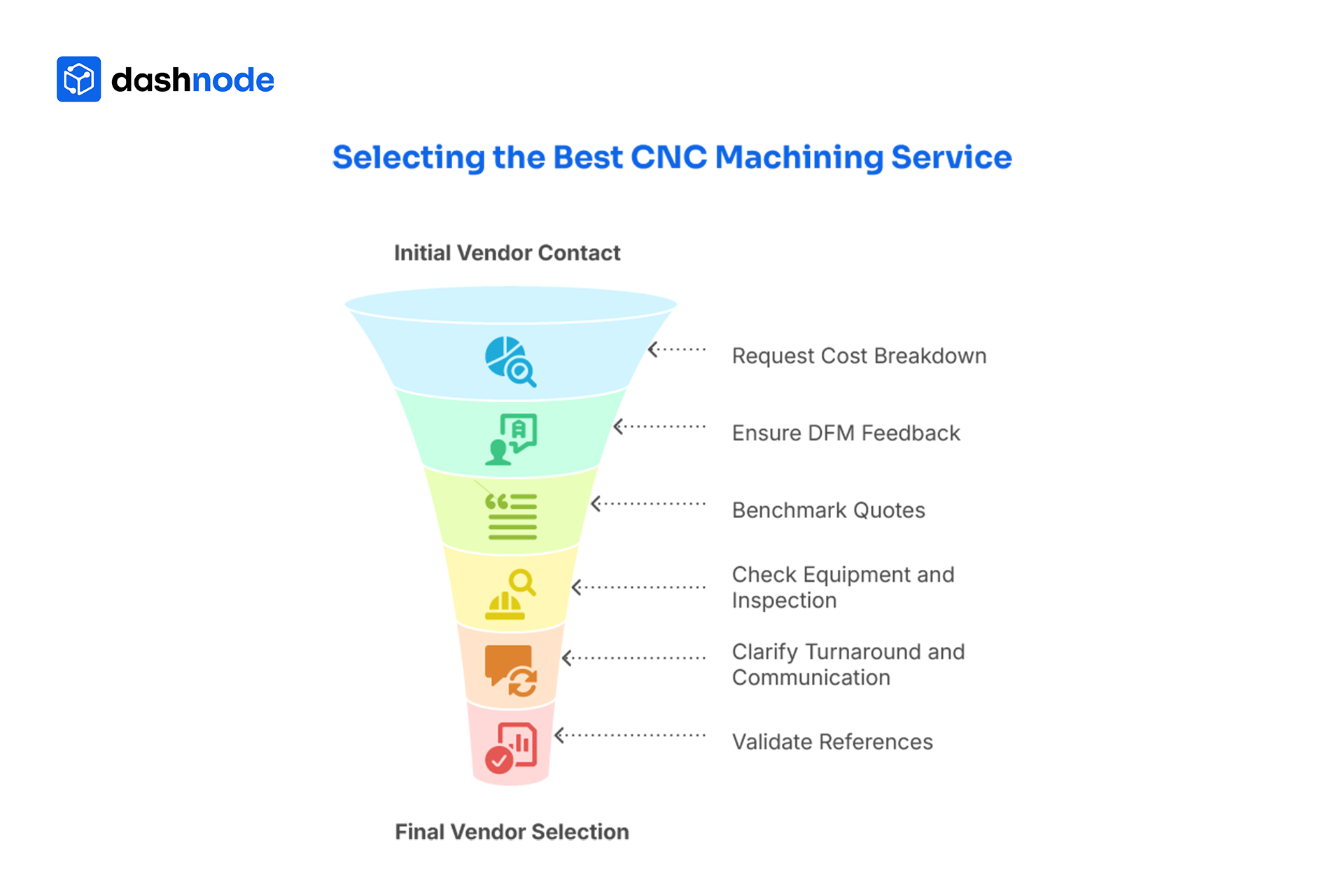
In an industry where time equals margin and accuracy determines your win rate, choosing the right CNC machining service isn't just a sourcing decision , it's a competitive edge. Whether you’re building functional prototypes, scaling production, or managing cost-sensitive BOMs, the vendor you select will directly impact your bottom line, speed to market, and quality consistency.
But let’s face it , for most teams, especially in India’s fast-growing manufacturing ecosystem, finding a CNC vendor with transparent costing feels like a shot in the dark. You issue an RFQ for CNC, get back a few quotes, and wonder why the pricing varies by 30–50% for the same part. Sound familiar?
This guide is for engineers, estimators, and sourcing leads who are tired of opaque pricing, delayed quotes, and surprise line items. Let's unpack exactly how to evaluate a CNC partner and what true transparency in costing should look like.
Not all precision machining services are created equal. Some are great at one-off rapid prototyping, others excel at high-volume batch production. Here’s what to look for:
Tip: Always ask for sample reports or videos of their machining operations. It reveals both transparency and capability.
.png)
Let’s break this down. When a CNC vendor gives you a single-line quote , say, "Machined Part X: ₹1,850" , you’re missing critical context:
Lack of visibility leads to miscommunication, missed optimization opportunities, and most importantly , margin leakage. In our experience, companies overpay by 15–30% simply because they don’t challenge the quote structure.
Transparent costing isn’t a luxury. It’s a necessity.
Here’s a sample quote breakdown you should expect:

Now you know where your money is going , and more importantly, where you can save.
.png)
The rise of online CNC services has made comparing vendors easier, but also overwhelming. Here’s how to separate the signal from the noise:
The best platforms allow you to compare processes (milling vs turning), suggest material substitutions, and adjust for batch sizes , all before hitting "submit."
Look for platforms that align cost transparency with manufacturability feedback. That’s a double win.
If your team is debating whether to go in-house or use an outsourced CNC partner, consider the following:
.png)
In many cases, outsourced precision machining services offer a lower TCO (total cost of ownership) , especially if batch sizes vary or project timelines are tight.
Transparent vendors will educate you on batch-size economics and design impacts:
Similarly, part complexity matters:
A good CNC partner doesn’t just accept your design , they challenge it.
.png)
If you’re engaging CNC vendors for rapid prototyping, align expectations:
Transparent costing here helps you separate nice-to-haves from mission-critical specs.

Your CNC supplier isn’t just a vendor , they’re a partner in engineering execution. When they’re transparent, you’re empowered. When they provide insights, not just quotes, your product and margins get better.
Our platform aims to make CNC costing structured, repeatable, and data-driven. But even if you’re working with traditional vendors, you can , and should , demand transparency.
Because the time you spend decoding opaque quotes? That’s time your competitor is closing the deal. Book a Demo with us now
It depends on part complexity, but most setup fees range from ₹2,000–₹5,000. For larger batches, this gets amortized over units.
Request samples, toolpath simulations, past case studies, or QC reports. A transparent vendor won’t hesitate.
Yes , especially if they offer real-time pricing, CAD analysis, and batch-level optimizations.
Often it’s setup, secondary operations (like finishing), or over-spec’d tolerances that aren’t actually needed.
Use forgiving materials, loosen tolerances, and bundle parts to share setup costs. Always ask for DFM advice up front.